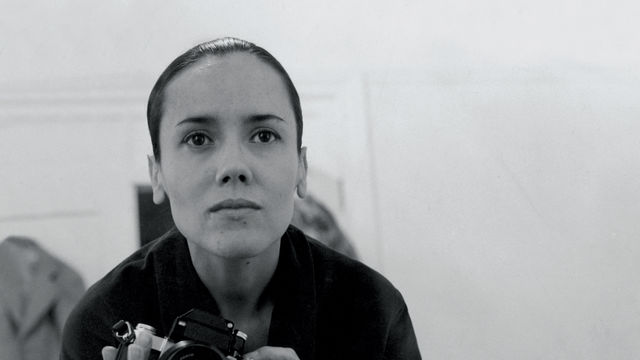
Sophie Rivera
A photographer of Puerto Rican decent, Sophie Rivera was born in 1938 in the Bronx, New York. She first studied at the New School for Social Research and later received scholarships to attend the Apeiron Workshops in Millerton, New York, with Paul Caponigro (b. 1932) and Lisette Model (1901–1983). For many decades Rivera photographed the life of New York's Latino, specifically Puerto Rican, working-class communities. She is best known for her untitled series from 1978 depicting Nuyorican (Puerto Ricans from New York) sitters in mid-perspective black-and-white photographs. For this series she asked passersby outside her building if they were Puerto Rican, and if the answer was affirmative, she invited them to be photographed against a plain dark backdrop. According to the curator Rocío Aranda-Alvarado, Rivera produced fifty of these portraits; only fourteen, however, survived a fire in her studio. The photographs that resulted from this series are commanding: the sitters display an unapologetic individuality and unadorned complexity that challenges any preconceived notions or stereotypes of their community.
Rivera is unique in her decision to represent and document the life of New York's Latino working class through a combination of direct photography, neutral backgrounds, and double exposures that produce a singular form of portraiture that is both conceptually strong and nonjudgmental. In 1986 she began working on a series photographing strangers who posed for her camera during the Halloween Day Parade in Greenwich Village. With this series she wanted to explore, according to her, "the relationship between personal fantasy and personal reality."# As in her earlier series, these black-and-white photographs depict passersby willing to pose for her camera who are placed against a blank wall. She has, however, titled these portraits with the name of the costumed character or persona the sitter was assuming that Halloween.
In the 1980s Rivera turned the camera's focus on herself and explored the world of self-portraiture in unexpected forms. She took photographs of her nude body from different angles by employing mirrors and also captured human waste and other materials that came from her body as a tool for self-referentiality. Throughout her life Rivera has been committed to the practice and dissemination of photography: she founded and ran a photography gallery; was an early member and instructor of En Foco, an organization that has supported the work of Latino photographers since the mid-1970s; curated photography shows; and wrote essays such as "Women: Where Are They in the History of Photography?" in which she demanded a radical feminist rewriting of the historiography of photography. Rivera's photographs were included in the important traveling group exhibition Our America: The Latino Presence in American Art (2013–14), curated by E. Carmen Ramos at the Smithsonian American Art Museum.
—Marcela Guerrero
Selected Solo Exhibitions
1972 Third Eye Gallery, New York
1975 Goths, Demons, and Others, Crossroads Gallery, New York
1987 Sophie Rivera: All Hallows Eve, El Museo del Barrio, New York
1996 Two/Two, University of Connecticut, West Hartford
2006 Portraits, Jersey City Museum, NJ
Selected Bibliography
Aranda-Alvarado, Rocío. "Sophie Rivera: Portraits." Nueva Luz 11, no. 2 (2006): 31–34.
Colón-Morales, Rafael. Sophie Rivera: All Hallows Eve. New York: El Museo del Barrio, 1987.
Sophie Rivera: Photographic Exhibition Two. New York: Wilmer Jennings Gallery at Kenkeleba, 1995.
Three Women, Three Islands: Sophie Rivera, Manhattan, Lilia Fontana, Cuba, Frieda Medín Ojeda, Puerto Rico. New York: Museo del Barrio, 1983.
Torruella Leval, Susana. "Looking at People." Center Quarterly: A Publication of the Center for Women's Studies and Services 12 (1990–91): unpaged.


